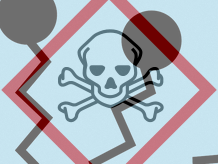Imagine that you have synthesized a new molecule, for example, a surfactant for a cleaning or washing agent. Before using it in such formulations, you have to test its toxicity. Various safety tests are required, including animal testing to get data on biodegradation in water, short-term toxicity to fish and aquatic invertebrates, acute oral toxicity, skin and eye irritation, etc. And now imagine that you can do without all these tests, but have a computer program giving you this information. This would save time and innovation costs, and unnecessary testing on animals. And for companies, it would make it easier to comply with regulations governing chemicals.
High-Quality Predictions
AMBIT is an open-source chemoinformatics system for high-quality chemical safety predictions. It is based on a ‘predictive toxicity model’ or computational non-testing toxicology approach and applies the principles of read-across and categorization. Read-across is a scientific method for predicting unknown properties of one chemical from known properties of similar chemicals. Categorization combines similar chemicals into chemical categories, or groups, of molecules to allow for read-across. It uses existing data to minimize cost and time-consuming testing as well as testing on animals.
AMBIT is designed to easily communicate with a variety of large substance databases such as internal company databases and knowledge-based expert systems for toxicity and metabolism. Examples are company owned IUCLIDs (International Uniform Chemical Information Databases) which capture, store, submit, and exchange data on chemical substances, commercial Meteor Nexus open source inductive databases for the prediction of chemical toxicity, or the IUCLID database of ECHA, the European Chemicals Agency. AMBIT gives users access to the entire non-confidential REACH dataset which includes currently 14,570 substances and 450,000 structures and their identifiers such as CAS, EINECS, and InChI numbers. ECHA supports AMBIT and makes their data freely available through the software.
Advantages
A substance may consist of constituents, impurities, and additives. This is why a substance cannot be assigned to a single structure. However, each individual constituent/impurity/additive can be related to single structures. Most in-silico tools and chemical structure databases cannot cope with this situation. The search function in AMBIT retrieves all substances which contain constituents/impurities/additives related to the target structure together with the substance identity, composition, and high quality data (see Fig. 1). This may enable the scientist, for example, to find out that the sensitizing properties of a pigment are not caused by the pigment itself but by a sensitizing impurity.

Figure 1. AMBIT search for structures and endpoint data.
Thanks to the linking of various databases, AMBIT allows users to easily and systematically search a wide variety of existing information about a chemical as well as data a company or institute has generated and integrated. It is possible to search for an exact or a similar structure as well as substructures. An enhanced search functionality enables the inclusion of impurities in substance search requests. This is important, for example, in real industrial conditions. The search results are formatted for many data export formats, including the REACH IUCLID format required by ECHA.
As far as REACH compliance is concerned, AMBIT helps companies to develop clearer and more transparent scientific justifications for their approach taken for read-across and categorization. It shows all decisions taken during the workflow and makes it unnecessary to provide additional, extensive justification for the proposed use of data collected from read-across methods. This minimizes animal testing and saves resource costs.
Target Audience
AMBIT is freely available for everybody. It is a supporting tool for experts in toxicology, ecotoxicology, product safety, etc., and so it is of interest to all organizations and companies involved in chemical safety assessment. AMBIT is also useful for screening of new substances intended for a specific use. However, the data provided by AMBIT have to be in any case subject to expert judgement.
AMBIT can be used either via the public server, or, e.g., if other databases should be integrated, it can be downloaded and installed internally. There are several free-to-view instruction videos enabling potential users to quickly master the tool hands-on. The software tool runs on multiple platforms such as Windows, Mac OS, and Unix.
History and Near Future
AMBIT is based on software that was developed 2004 by Procter & Gamble and the IT programmer IdeaConsult Ltd., Sofia, Bulgaria. Clariant has further developed AMBIT in collaboration with IdeaConsult in a Cefic Long-Range Research Initiative (LRI)-project. With LRIs, Cefic (the European Chemical Industry Council) aims to identify and fill gaps in the understanding of the hazards posed by chemicals and to improve methods available for assessing them. The updated AMBIT open-source software with enhanced predictive power was launched in April 2016.
ECHA plans to release an update of its IUCLID database end of June. Cefic intends to upgrade AMBIT to this IUCLID6 in the near future.
Authors
Dr. Erika Kunz, Head of Global Registration and Evaluation of Chemicals, Clariant Produkte (Deutschland) GmbH, Sulzbach, Germany
Dr. Bruno Hubesch, LRI Programme Manager, Cefic, Brussels, Belgium
Also of Interest
- AMBIT public server,
- Video Instructions for AMBIT, Cefic, Brussels, Belgium




